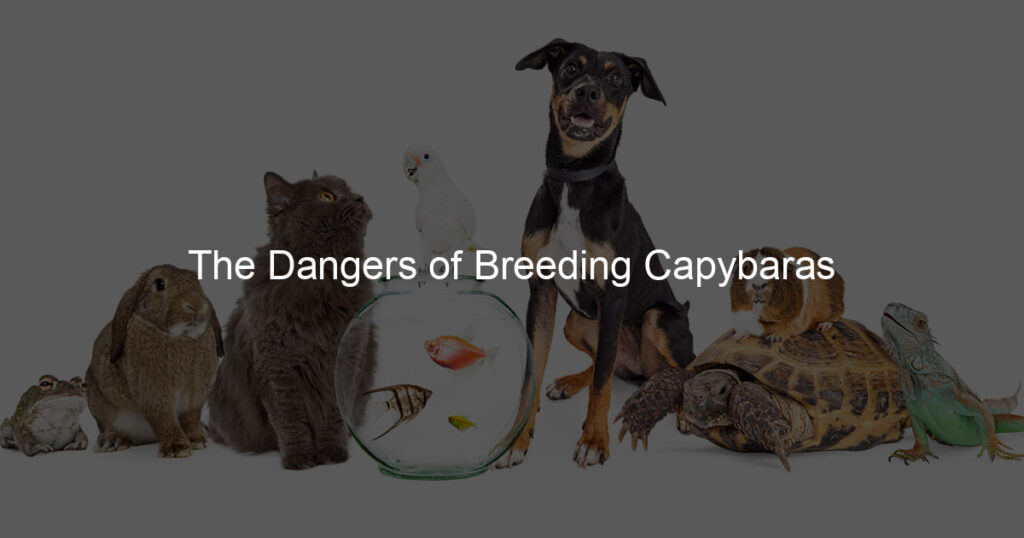Capybaras are large rodents from South America. They are commonly known as capybara, but formally known asHydrochoerus hydrochaeris. They are primarily found in grasslands, savannas, forests and riverine areas of the Pantanal region. These animals grow up to a length of 4 feet (1.2 meters), with males usually being larger than females. Adults weigh between 8-40 pounds (3-18 kilograms). There are 23 species of capybara, with the most common being the North American capybara and the African grassland capybara. Both these species can be found in many zoos across the world including South Africa, United States, Germany and Brazil. The primary danger that comes with keeping these animals as pets is their explosive breeding rate; they have a gestation period of only 11 months and give birth to around 10 young per pregnancy. The captive environment also leads to behavioral problems for these rodents; their natural habitats do not offer them anything similar and this has led to negative effects on their psyche.
What are the downsides of owning a capybara?
The primary downside of owning a capybara is they are an invasive species. They are wild, and if they escape their enclosure, they can wreak havoc on local ecosystems. When these animals reproduce in captivity, they do so quickly and there is not much space for them to roam around and get exercise. This has led to obesity in many captive capybaras which can lead to other health problems such as arthritis. Additionally, the climate conditions at most zoos that house these animals is not suitable for the rodents. The humidity levels within the enclosures raise their body temperature which leads to heat stroke or hyperthermia.
Can you breed capybaras?
Capybaras are the perfect pets for people who have time to spend with them. They have a gentle and loving temperament, which makes them perfect for older children or those who want a pet that they can take care of themselves.
But these animals are not suitable as pets for everyone. If you are looking for an animal that will stay small in size and won’t require more than 10 square feet of space, then these animals might not be the best fit for you. There is also a high risk of kids getting bitten by them if handled incorrectly.
If you’re going to keep these rodents as pets, it’s important that you read up on the proper care they need before purchasing one.
Do capybaras carry any diseases?
There are no diseases that are specific to capybaras and they do not carry any of the same diseases as other rodents. However, they can carry a few different types of viral infections and parasites. To prevent this, they should be kept in clean conditions and given proper care to avoid illness.
On average, a capybara may live up to 12 years with proper care. They are mostly herbivores and their diet consists of grasses, fruits, roots, leaves and aquatic plants.
Can capybaras harm humans?
Capybaras are primarily herbivores, but they can also eat meat if it is available. Humans do not have a natural predator to these animals, but some have been known to cause harm to humans. In 1996, a capybara escaped from the San Diego zoo and killed a 3-year-old boy after it attacked him while he was playing in his front yard. In another incident, a capybara that had been injured by a car turned on its owner who was trying to help her and bit her on the face before she managed to escape. Capybaras are also known for causing property damage such as chewing on doors or walls and tearing up furniture outside of their enclosure.
Many zoos have reported issues with getting capybaras acclimated to the inside of their enclosure; some have stated that they cannot even get them out of the water for more than 5 minutes without them drowning (the cavy does not breathe well out of water).








